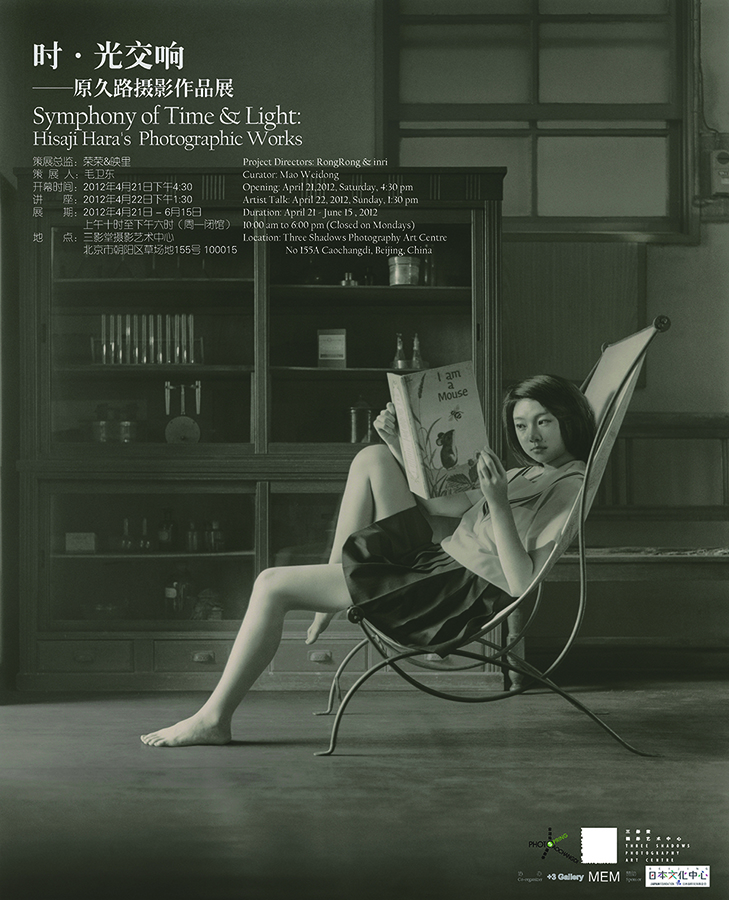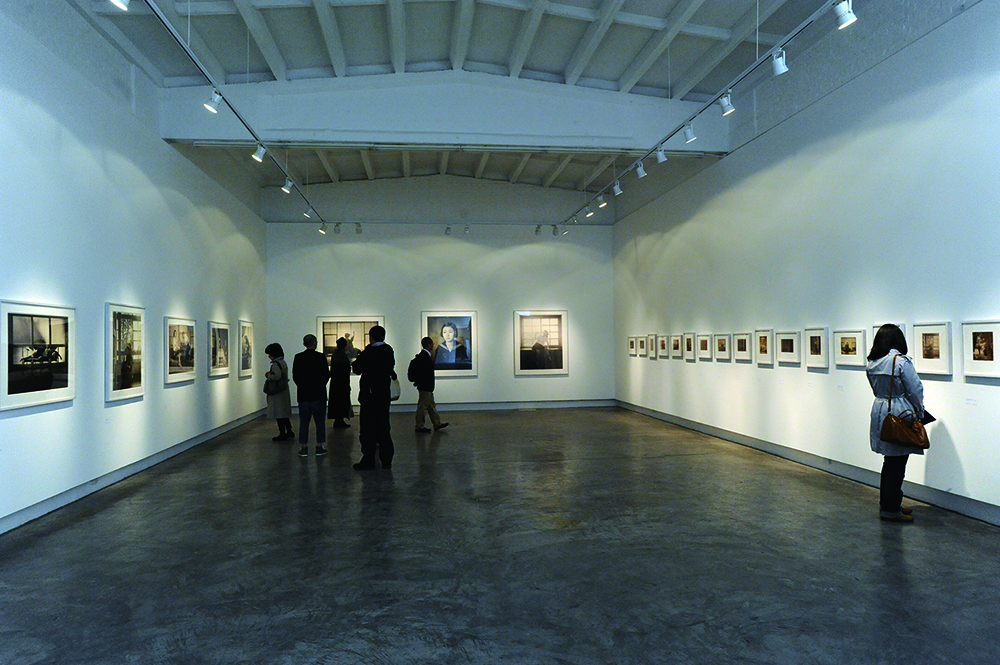2012 | Symphony of Time and Light

Symphony of Time and Light:
Hisaji Hara’s Photographic Works
Mao Weidong
Re-examining historical masterpieces through alternative media has become a popular practice in contemporary art, yet Japanese artist Hisaji Hara provides a fresh perspective on this form with his restaging of scenes from paintings by Balthus. He uses the unique language of photography to capture the distinctive spirit found in Balthus’ paintings, as well as to turn a critical eye on 20th century history.
After Hara returned to Japan from the US, he rented an old sanatorium to provide the backdrop for this series. In the process of creating the photographs, he used a high-quality industrial fog machine, which he used to control the atmosphere of the scene. Thus he was able to manufacture a certain kind of depth while keeping the light even, simultaneously veiling the works in a layer of mystery. In order to break through the physical limits of the camera lens, and achieve a re-creation of multiple perspectives from the paintings of Balthus, Hara utilized multiple exposures and changing the point of focus from exposure to exposure to achieve the unique spatiality. At times, he used this technology to allow a single model’s several different performances appear in the same image.
The reason Hara chose the works of Balthus as the subject for his creativity is that he himself was deeply fascinated by the rich diversity that could be found paintings. “Balthus’ paintings contain a certain element that the viewer can’t necessarily experience through the body. In other words, you could say that, ‘it’s a depiction of the perfect light during the slow elapse of a long period of time in a certain place.” I believe that “time and light” lie at the core of Balthus’ paintings.” Coincidentally, time and light are essential to photography, which is perhaps the main reason why Hara chose photography to reinterpret the subjects from Balthus’ paintings. As he says, time represents the history of man, while light describes man’s vision.
Hara has been continuously exploring one question: if photography is not just a result of modern art, then has it also, like painting, become an authentic technique in our reproductions of the immediate world? Photography, a product of modern thought, relies on the ability of a mechanical device to suddenly freeze time, as though plucking a living thing from life and fixing it to a negative, and then paper, where it remains as a lifeless, unchanging object. On the other hand, the fact that photography can capture a moment means it can take a slice out of the natural flow of time and make it eternal. Then when someone looks at that photograph, the slice of time is resuscitated within the viewer through his or her emotions and memories. Hara painstakingly arranged his subjects in order to create a feeling of dynamism in their static states. These fixed postures suggest each subject’s inner life to the viewer and allow for conjecture.
According to Hara, his use of various techniques including the albumen printing process and even the restaging of Balthus’ paintings aren’t ends in and of themselves, but rather part of a process aiming to express his inner views and search for truth. His background in cinematography gives him a highly developed sense of space and frame, which translates into masterful control over setting. He skillfully realized his individual expression, and the many layers express his reflections on many issues. Hara’s decision to present the final works in both albumen and digital inkjet guides viewers to walk the line between painting and photography, digital and traditional technologies, innovation in contemporary art, and the intersections of Eastern and Western culture.

Hisaji Hara:Symphony of Time and Light
April 21 – June 15, 2012
Artist Talk: Sunday, April 22, 2012 at 1:30 p.m.
+ 3 Gallery: Courtyard No. 155A, Caochangdi, Chaoyang district, Beijing, China
The exhibition was realized in association with MEM, Tokyo.
“Whether through photography or painting, ultimately, we are obliged to search within a subject for truth.”
Hisaji HARA was born in 1964 in Tokyo, Japan. He graduated in 1986 from Musashino University of Art and Design. In 1993 he immigrated to the US, where he was the Director of Photography at the Science Technology Network, as well as the exclusive videographer for Hillary Rodham Clinton at NHK, New York. He worked as director of photography for many other documentaries and TV programs. Following his return to Japan in 2001, he became an independent photographer and videographer.
